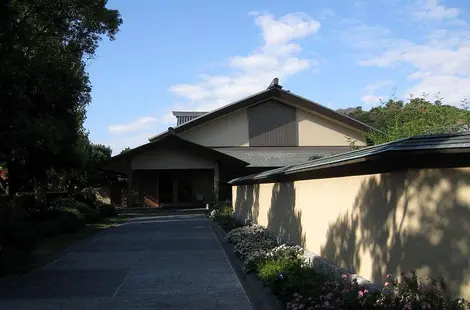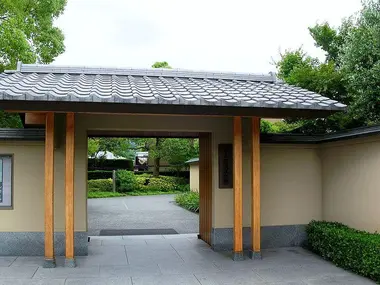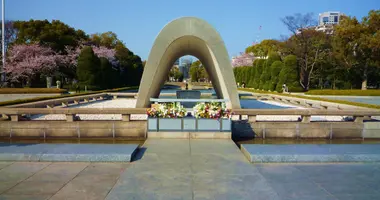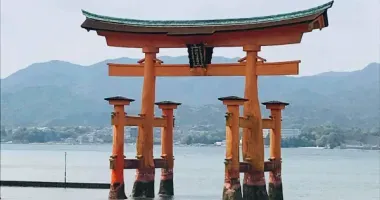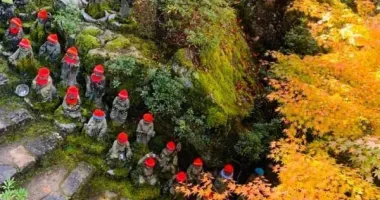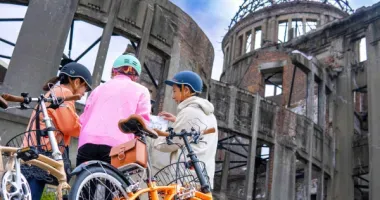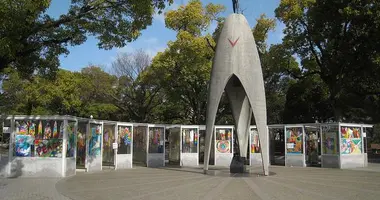The Hirayama Ikuo Museum 平山郁夫美術館
- Published on : 24/05/2019
- by : S.V.
- Youtube
Tribute to the child of the country
In the Seto Inland Sea, the small island of Ikuchijima was the birthplace of one of Japan's most famous contemporary painters, Ikuo Hirayama (1930-2009). Since 1997, in his homeland, a museum has been entirely dedicated to him.
In the footsteps of the painter
Opened in 1997, the Hirayama Ikuo Museum of Art features the largest collection of the contemporary master of nihonga or traditional Japanese painting .
The permanent collections offer a complete panorama of his work: childhood drawings demonstrating precocious virtuosity, personal photographs, stories, travel diaries, sketches, preparatory drawings, paintings and watercolours. Born in Setoda ( current city of Onomichi ) in 1930, Hirayama studied art at the University of the Arts in Tokyo, from which he graduated in 1952. Several decades later, he would also become president twice; a first mandate from 1989 to 1995 then a second from 2001 to 2005.
Permanent collections and temporary exhibitions are an opportunity to appreciate the technique that contributed to its international fame . By working a large amount of material on the canvas, he gives relief and a unique texture to his paintings .
Setouchi's Love
If there is one thing that IkuoHirayama will celebrate throughout his life in his work, it is his native region. The artist liked to declare: " My starting point is the culture of Setouchi" . From his youthful works to the most recent creations, Hirayama has always paid homage to this region of the Seto Inland Sea which saw him grow up.
As an example, let us cite his series entitled "Fifty-three stages on the road to Shimanami" in which he represents in 60 watercolors and 3 paintings, the famous landscapes, monuments and viewpoints that punctuate the journey on the Nishiseto expressway, often called Shimanami Kaidô , connecting Onomichi to Imabari (Ehime prefecture). A creation that is reminiscent of the series of ukiyo-e prints illustrating the "Fifty-three stages of Tokaidô" produced by the great masters of ukiyo-e from the Edo period (1603-1868) such as Hiroshige , Hokusai and Kunisada.
This influence of the landscapes of the Seto Inland Sea can be seen even in the architecture of the museum itself . Indeed, the museum garden, designed by Ken Nakajima, is an evocation of the many islands and islets of the Seto Inland Sea.
A fervent pacifist
Far from being satisfied with idyllic representations of his native region, Hirayama is a deeply committed man and artist .
First, in favor of nuclear disarmament . Called to work at the Hiroshima ammunition depot in 1945, Hirayama was a hibakusha, a survivor of the atomic bomb that hit the city on August 6. A victim of radiation and affected by several cancers throughout his life, the artist was a fervent pacifist .
This commitment also shines through in his work. Thus, one of his most famous works, "The Holocaust of Hiroshima", is a ferocious denunciation of this tragic event . The latter is also compared by some art critics to the mythical "Guernica" by Pablo Picasso for its political significance.
Heritage preservation in focus
Ikuo Hirayama has also worked hard for the protection of world heritage . This fight to save masterpieces in danger dates back to the 1960s. It is indeed from this date that Hirayama surveys the famous Silk Road every year , this old trade route linking Turkey to China. There he discovered ancient sites threatened by wars or looting .
From these multiple trips will be born a series of paintings immortalizing scenes of daily life and landscapes of Iran, Iraq, China and Afghanistan. His multiple commitments earned him recognition from the greatest international bodies . He will be named Goodwill Ambassador to Unesco, decorated with the Order of Cultural Merit in Japan, elevated to the rank of Knight of the Legion of Honor in France and winner of the Ramon Magsaysay Prize in 2001 which rewards excellence in Asia.
Address, timetable & access
Address
Phone
+81 845-27-3800Timetable
By boat: From Onomichi, 40 minutes by boat to Setoda Port or 25 minutes from Mihara Port. The museum is a 10-minute walk from Setoda Port. By car: Nishiseto Expressway (Shimanami Kaido), 10 minutes from Ikuchijima-Kita Highway Interchange Exit (from Honshu) or 10 minutes from the exit of the Ikuchijima-Minami highway interchange (coming from Shikoku)Price
Adult: 900 yen. Child: 200 yen.Access
Open daily from 9 a.m. to 5 p.m.Website
http://hirayama-museum.or.jp/en.html



